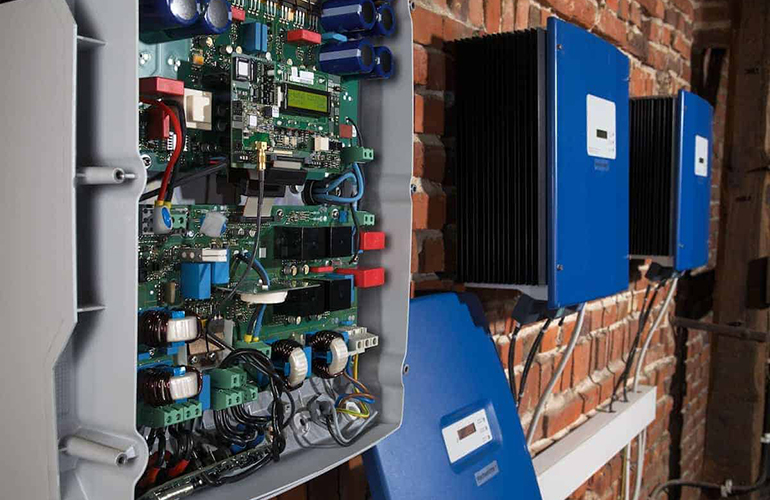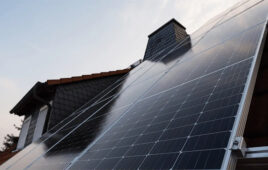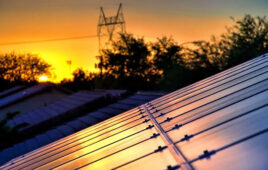
By David Bromberg, Aurora Solar
As you likely know, solar cells produce direct current (DC) electricity, which is then converted to alternating current (AC) electricity by an inverter. Converting energy from DC to AC allows you to deliver it to the grid or use it to power buildings, both of which operate with AC electricity. When designing a solar installation, and selecting the inverter, we must consider how much DC power will be produced by the solar array and how much AC power the inverter is able to output (its power rating).
This article will discuss some critical considerations for solar projects to ensure that the inverters in your designs are appropriately sized.
Specifically, we’ll examine the relationship between the amount of energy your solar array produces and the amount of power your inverter can output, and we’ll introduce the concept of inverter clipping.





DC-to-AC Ratio Annual AC Energy Production Energy Lost to Clipping
1.0 163.06 MWh 0.0 MWh
1.3 193.86 MWh 1.8 MWh (0.9%)
1.5 217.24 MWh 11.0 MWh (4.8%)
The table says it all. It is becoming popular to design with clipping in utility sized projects, one can actually make money (more often) and assure the generation requirements in the PPA with a 1.5 to 1 ratio system. It is also a good design if energy storage is the next addition to the system. For residential solar PV systems, over building is often due to the future adoption of BEVs and battery charging and perhaps a system of solar PV + ESS for resiliency.
I have had some success with getting inverters that are 25% larger than needed for split array projects. That 25% larger inverter runs cooler and when temperatures do get into the derating range, the inverter folds back power to meet system design criteria instead of generating less energy to use. On one side you have solar PV capture in hazy or cloudy conditions, on the other side you get energy output curtailment due to heat extremes.